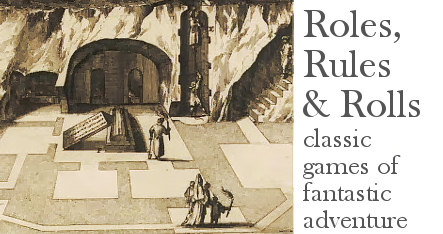Recent discussions started by Kiel and continued on G+ have got me thinking about why completely separating an adventure's text from its map, or printing the map devoid of details, still seems like a viable idea to publishers. Is it just tradition?
Looking at the design of the first TSR modules, it seems clear that one goal was to have the map contain as little information as possible, so that an accidental peek by players behind the screen would not reveal too much.
Thus, the need to constantly flip back and forth between the big map and the numbered section of text, rather than using map insets in the text or text notes on the map.
This technique is what security experts call "security through obfuscation." By making things hard to find for yourself, you try to make them impossible to find for others. Closely related is the idea of "security through obscurity," which you also saw in old school Advanced D&D with the injunctions that players not be able to access the DM book or monster manual. And of course, the very cerulean color of the old-school maps is another security device, to make them unreadable by the xerographic technology of the day.
Today, with everything available online legally or illegally for most published modules, the best defense is just to assume that players are their own security; that they play not to defeat you, but to enjoy discovery and surprise;and that you the GM help them in this goal by keeping the map discreetly covered, but with whatever marks are necessary to help you run the game smoothly.
In praise of Lamentations (LotFP)
2 hours ago


